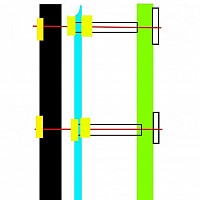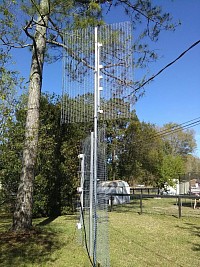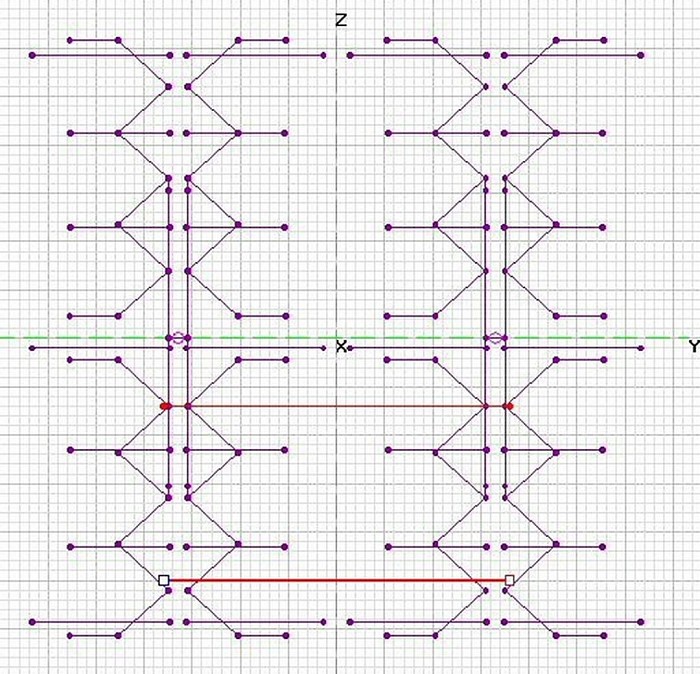Stacking Antennas
More than One
Stacking Antennas refers to mounting two or more matching antennas together to either increase signal reception from a single source or pointing antennas in different directions to receive signals from towers on oppisite compass points.
Your targets should all be on the same Band and all feed lines should be the exact same lengh and feed into a single combiner or reverse splitter which feeds a single line to the grounding block. Got that part, it's important ?
Stacking methods can be Vertical, one or more above the other. Horizontal, antennas mounted side by side, or both, as long as the antennas are exactly alike. Don't mix antenna models.
An Array can be many individual units stacked vertically and horizontally pointing to a single or multiple targets.
CAUTION: when stacking, all antennas must have the same polarity. When connecting add one feed at a time and check for signal, a black screen or no signal indicates reversed polarity at the transformer (balun) simply switch the leads on the last balun attached. Do this for each antenna added to your array.
When stacking side by side, parallax comes into play in order for all antennas to point directly at your target. A very slight adjustment of one antenna towards the other is needed to resolve this. You have to use a compass. Aim each antenna individually to the magnetic compass bearing for the tower from the rabbit ears report. That will compensate for parallax difference. How you aim each is your call, people don't always consider parallax when horizontal stacking antennas yet it's the most important part of getting it to work.
Some double antennas have a way built in to adjust for this problem most don't, they weren't intended to be used this way.
Only one of your antennas on the mounting rig has to be movable. When building, I have to know if the unit is going to be horizontal stacked so I can build an adjuster into the unit without throwing the whole rig out of phase.
Vertical stacked antennas need to each focus on the horizon, or a few degrees above aimed at the tower.
There is more to stacking and I'll put more here as I sort through it.
Stacked Array
Different Bands
Antennas of different Bands such as a Bowtie for UHF and a Dipole for VHF can be stacked provided their individual feed lines connect to a specialized signal combiner called a UVSJ (UHF/VHF seperator joiner) before feeding to the grounding block.






